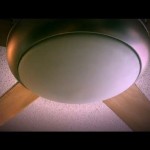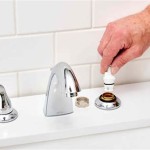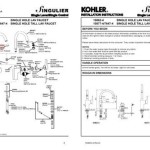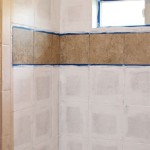Can A Bathroom Exhaust Fan Be Vented Down?
Bathroom exhaust fans play a crucial role in maintaining a healthy and comfortable indoor environment. Their primary function is to remove moisture, odors, and pollutants from the bathroom, preventing mold growth, ventilation issues, and unpleasant smells. While the conventional wisdom dictates that bathroom exhaust fans should be vented to the outside, the question of whether they can be vented down arises. While venting down might seem like a convenient solution in certain scenarios, it is generally not recommended and often poses significant drawbacks.
Potential Issues with Venting an Exhaust Fan Down
Venting a bathroom exhaust fan down, typically to an attic or crawl space, can lead to a range of issues, including:
- Moisture Accumulation: This is the most serious problem associated with venting an exhaust fan down. The moisture-laden air expelled from the bathroom will condense in the attic or crawl space, creating a breeding ground for mold and mildew. These microorganisms can damage building materials, compromise indoor air quality, and pose health risks, especially for individuals with respiratory issues.
- Odor Issues: Although the fan removes odors from the bathroom, venting it down can cause them to linger in the attic or crawl space, leading to unpleasant smells throughout the house. This is particularly problematic when the exhaust fan is used for tasks like showering, which produce strong odors.
- Increased Humidity: The introduction of moist air into the attic or crawl space can increase humidity levels, potentially leading to condensation on building materials and further enhancing the risk of mold and mildew growth.
- Structural Damage: The constant presence of moisture in the attic or crawl space can lead to wood rot and other structural damage, impacting the overall integrity of the house.
Exceptions and Considerations
While venting a bathroom exhaust fan down is generally not recommended, there might be rare exceptions where it is considered acceptable. In these cases, a careful assessment of the situation and the implementation of specific measures are crucial.
- Well-Ventilated Attic: If the attic is well-ventilated and has proper insulation, the risk of moisture accumulation can be mitigated. However, it is important to ensure that the air flow in the attic is sufficient to carry away the moisture from the exhaust fan. Moreover, regular inspections are necessary to check for any signs of condensation or mold growth.
- Dedicated Vent: Even if venting down is considered, using a dedicated vent for the bathroom exhaust fan, separate from any other vents in the attic, is crucial. This prevents the spread of moisture and odors to other areas. The vent should be equipped with a check valve to prevent air from flowing back into the bathroom from the attic.
- Dry Climate: In dry climates, the risk of moisture buildup in the attic or crawl space might be reduced. However, it is still essential to assess the specific conditions and ensure adequate ventilation to prevent any potential issues.
Best Practices for Bathroom Exhaust Fan Ventilation
The most effective and recommended method for venting a bathroom exhaust fan is to exhaust it directly to the outside. This eliminates the risk of moisture and odor accumulation within the house and ensures proper ventilation.
Here are some best practices for venting a bathroom exhaust fan to the outside:
- Direct Vent: The exhaust fan should be vented directly to the exterior of the house through a dedicated pipe or duct. This pipe should be made of non-corrosive materials like PVC or galvanized steel and should be properly sealed at all connections to prevent air leaks.
- Proper Size and Length: The vent pipe should be the appropriate size and length to ensure adequate airflow. Refer to the manufacturer's specifications for recommended vent pipe sizes and lengths.
- Upward Slope: The vent pipe should slope upward, typically at a minimum of 1/4 inch per foot, to prevent water from collecting in the pipe and potentially flowing back into the bathroom.
- Protective Cover: The vent opening on the exterior of the house should be equipped with a protective cover to prevent debris and insects from entering the vent pipe.
- Regular Maintenance: Regular maintenance, including cleaning the vent pipe and fan blades, ensures optimal performance and prevents any blockages that can restrict airflow or lead to moisture buildup.

Is This Bathroom Vent Ed Up Greenbuildingadvisor

Bathroom Exhaust Fan Can Vent Out Through The Wall Or Up Roof Building America Solution Center

Best Practices Bathroom Venting Greenbuildingadvisor

Can Bathroom Exhaust And Dryer Share Same Outside Duct Diy Home Improvement Forum

5 Reasons Bath Fans Have Such Poor Air Flow Energy Vanguard

How To Install A Bathroom Fan Diy Family Handyman

Why Does The Upstairs Bathroom Vent Fan Leak Every Time It Rains Quora

Venting A Bath Fan In Cold Climate Fine Homebuilding

Inspecting The Bathroom Exhaust Internachi

Everbilt 4 In To 6 Soffit Exhaust Vent Sevhd The Home Depot







